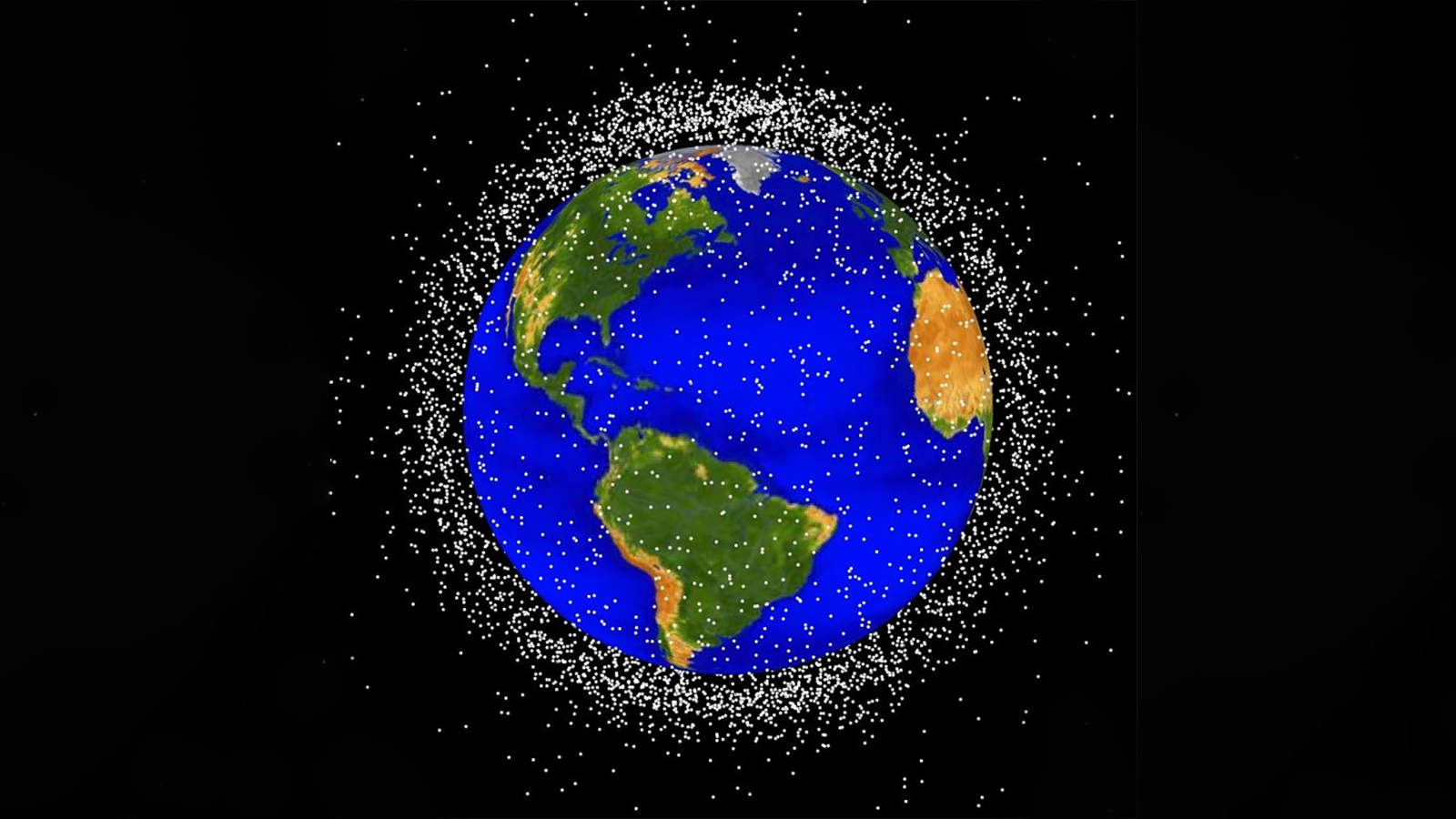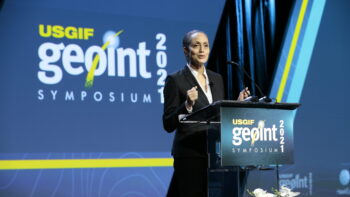
Space Command currently is keeping tabs on more than 44,000 satellites and pieces of space junk. (NASA image)
WASHINGTON — The White House body for coordinating science policy has put the Pentagon, along with the State Department, in charge of “prioritizing sustainable access” to low Earth orbit (LEO) for scientific research — part of a new interagency strategy for supporting government-wide research activities in the lowest band of space, including for national security.
This effort includes promoting interagency efforts and international cooperation on preventing space debris and developing novel technologies designed to extend the on-orbit lifetime of satellites and spacecraft, as well as supporting innovative launch capabilities. While the Defense Department for several years has been expressing interest in commercial development of new LEO-based capabilities such as orbiting “trash trucks” to clean up dangerous space junk, “Walmarts” in space” and on-orbit satellite re-fueling, up to now no agency had been assigned to spearhead such research.
The “National Low Earth Orbit Research and Development Strategy,” issued with little fanfare on March 31 by the National Science and Technology Council (NSTC), is designed as a “vision” for US leadership in future research and development for exploiting LEO, the region of space between about 100 kilometers and 2,000 kilometers above the Earth, for commercial, civil and defense purposes.
FULL COVERAGE: Sea Air Space 2023
NSTC is led by the White House Office of Science and Technology Policy, and is charged with coordinating science and technology policy across federal agencies to ensure that funded programs are in sync with presidential goals.
“As the United States leads the world in the exploration of the Moon and Mars, maintaining U.S. preeminence in space research is important as the use of Low Earth Orbit (LEO) grows and the development of space enters a new era,” the strategy states.
It seeks to promote R&D on a widely diverse and futuristic set LEO-based activities, ranging from microgravity experiments on cancer cures to tech to support crewed commercial space stations to in-space manufacturing — all the way to evolving tech that could support human “transportation and settlement” (colonization!) throughout the solar system.
It also supports creation by NASA of a “LEO National Laboratory” that would corral disparate R&D activities across federal agencies including the Defense, Energy and Commerce departments.
“A future LEO National Laboratory would encompass orbital and suborbital platforms as well as existing and new terrestrial facilities, including DOE’s national laboratories, NASA’s space flight and research centers, DOD’s service research laboratories, U.S. universities, and private-sector partners. To make strides in standards for future space situational awareness (SSA) technologies and in cybersecurity for satellites, the Laboratory would continue to collaborate on cutting-edge research with DOC. The Laboratory would educate the public on the use and importance of space-based research,” the strategy explains.
Further, the new strategy squarely addresses the increased importance of LEO for national security.
“Where appropriate, and in concert with civil agencies, the national security departments and agencies will also support the growing demand for space research and infrastructure for national security purposes, and the increase in commercial space activity. It will promote a market for space-based research by public and private U.S. entities due to the increasing need for reliable and more affordable access through innovative launch vehicles, and frequent spaceflights,” the strategy explains.
“These efforts require infrastructure such as ground systems, satellite systems, potentially in-space assembly, and reusable vehicles. The national security departments and agencies will also expand opportunities for non-traditional researchers,” it adds.
NTSC lays out five macro-level “strategic policy objectives,” broken down into 13 specific tasking orders for interagency work — most led by NASA, but including two assigned to DoD. The five macro objectives are:
- Advance Groundbreaking Science and Technology Development
- Strengthen U.S. Government Collaboration and Partnerships
- Promote Market Opportunities, Innovation, and Sustainability
- Expand International Cooperation
- Stimulate STEM Education and Workforce Development
DoD and State are given the lead for tasking 2.3, “Prioritize sustainable access to LEO for scientific research,” with support from Commerce, NASA and the National Science Foundation (NSF). The strategy elaborates:
In cooperation with international partners and consistent with U.S. policies, the U.S. Government will continue to support the exploration and use of space for peaceful purposes, including the use of LEO for R&D. As such, the U.S. Government promotes best practices, guidelines, and other rules of the road, as well as technological improvements that enable the enduring use of the LEO ecosystem. The U.S. Government will continue scientific and technological research and development to prevent and address orbital debris as well as to develop novel technologies to increase spacecraft endurance. In accordance with applicable law, the U.S. Government will conduct basic and applied research in LEO to aid U.S. national security interests.
The Pentagon also tapped to lead interagency efforts under tasking 5.3, “Build capacity in U.S. post-secondary learning institutions for space science and technology,” with support from the Education Department, NASA, DoE, and NSF.























